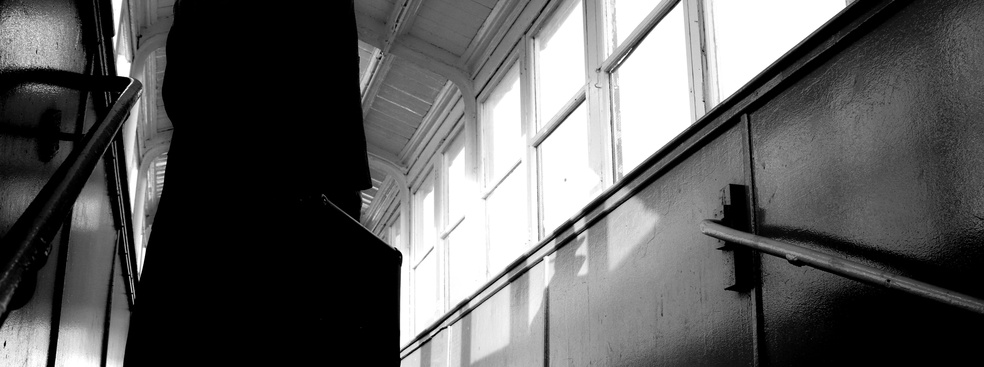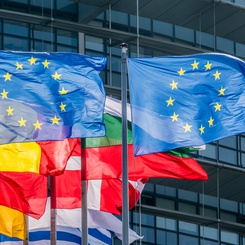Organized crime nowadays plays a prominent role in a variety of illicit markets. Organized crime groups (OCGs) manage illicit businesses such as drugs, extortion, racketeering, firearms, counterfeiting, cargo theft, illegal gambling, human trafficking and usury. According to the United Nation Office on Drugs and Crime, illicit markets’ value amounts to 2.1 trillion USD, approximately 3.6% of the world’s GDP, with a profit margin of over 30%.
Beyond Illegal Markets
Criminal organizations are reinvesting such profits in legal markets, carrying out legitimate activities and creating strategic partnerships with established market players. Cross-country reports highlight substantial criminal investments in sectors as diverse as construction, retail, energy, banking, waste and scrap management, and agriculture. The Italian organized crime groups (Cosa Nostra, ‘Ndrangheta and Camorra) invest in legal businesses both in Italy and abroad. Prosecutors have revealed substantial mafia investments in the food value chain and in solar energy and wind power operations both in Italy and in East Europe. In Germany, the Camorra specializes in clothing shops, while Cosa Nostra prefers the construction business and ‘Ndrangheta runs factories, restaurants, hotels and grocery stores. The Italian ‘Ndrangheta has been successfully operating in the sales of Dutch flowers for more than two decades without anyone even noticing it.
The Italian mafias are not the sole OCGs investing in legal business activities (Transcrime 2015). Russian/Georgian OCGs are present in a large number of EU countries, and they have a taste for the wholesale and retail trade sectors, bars, restaurants, real estate, hotels, casinos, and gaming. Chinese OCGs presence is especially high in the wholesale and retail trade, bars and restaurants, personal services and money transfer agencies. The Corsican mafia invests for example in hotels, casinos and bars in the South of France.
Organized Crime Groups and Entrepreneurship
OCGs investments in legal businesses create a grey zone bridging crime and legitimate market players. In this perspective, crime affiliates markedly differ from the typical representations of mafia lords presented in most TV series and movies. Most OCG affiliates are nowadays neatly dressed business people who strive to keep a low profile.
In her recent research, published in the Small Business Economics Journal, Elisa Operti, professor of management, studies how policymakers contrast OCGs’ infiltration in legitimate markets and promote entrepreneurial activities in areas with criminal infiltrations in legal markets. In focusing on policies prescribing asset confiscation in relation to alleged connections of their owners with organized crime, she seeks to understand the effect of those policies on entrepreneurial activities.
What Do Organized Crime Groups Bring to the Table?
Contrary to common wisdom, OCGs do not only bring about uncertainty and intimidation in markets. When the formal institutions cannot provide a speedy and balanced judicial system, intellectual property rights and contract enforcement, mafia syndicates can help facilitate social and economic exchanges. In other words, OCGs, with their affiliates, resources and private avenues of law enforcement, can represent “a response to inefficiencies in the property rights and institutional framework supplied by the state”, bringing about some benefits to legitimate businesses. In Japan in August–September 1945, after the government collapsed and before the US forces restored order, the Yakuza, the Japanese mafia, played a major role in getting markets restarted. The Sicilian mafia guaranteed contract enforcement and order during the Italian unification and helped the US army gain control of the Sicilian territory during the Second World War. During the financial crisis in 2007 and 2008 and the following economic downturn, OCGs granted access to credit to law-abiding entrepreneurs who were turned down by banking institutions.
Policies targeting organized crime groups infiltrations in legal markets should carefully consider the institutional role organized crime groups play in weak institutional environments, or in economic downturns. If the state is not able to guarantee law enforcement, welfare and services, strong policies against OCG are useless, if not detrimental, to entrepreneurs.
Asset Confiscation Policies
Policy responses to organized crime activities, such as legal persecution and the freezing, seizure, or confiscation of assets resulting from OCGs’ activities, have been increasingly adopted in several countries. A recent report estimated that just in the year 2014, assets worth more than two billion euros were confiscated from criminal groups in Italy, Germany, Spain, France, England, and Wales. The US has extended such practices to the proceeds related to terrorist groups.
Italy was one of the first countries to implement such a policy, with the approval of the “Rognoni—La Torre” Law (L646/82) in 1982, allowing the confiscation of assets of individuals belonging to criminal groups, or to their relatives who played a cover-up role for the criminal organization. In Europe, the keystone of the fight against organized crime is the EU Directive on “Freezing and confiscation of proceeds of crime” (2014/42/EU). Asset confiscation counters organized crime’s interests by limiting the gains resulting from their activities. However, the consequences of confiscation for the assets themselves, and for the regions where they are located, remain contested.
Key Findings
What professor Operti finds is that the confiscation of OCGs economic assets (e.g. savings, financial products, company shares, resulting from their investments in legal markets, or entire firms) is beneficial for the region. It reduces unfair market competition. Lured by the prospect of a fairer game, entrepreneurs gain confidence and are more willing to launch new ventures. On the other hand, seizure of criminal organizations’ operational assets (such as their real estate or land, or the vehicles used to exercise territorial control and private protection) has a negative effect on regional entries. This may be due to the fact that real estate or vehicles seized to OCGs cannot be quickly redeployed in legal markets. It may also be due to the fact that freezing OCGs’ operational assets weakens their ability to exercise sovereignty in an area, creating an institutional vacuum and increasing uncertainty for prospective entrants.
Building Responsive Local Governments
These findings leave unanswered the question of what local governments can do to fill the institutional vacuum left by organized crime groups. In this respect, the research highlights the importance of fostering local institutional responsiveness - the capacity of national and local institutions to handle the asset confiscation process in an efficient and timely manner and the uncertainty triggered by confiscation. Responsiveness typically entails the implementation of statutes comprising concrete, operational acts of sovereignty. It also entails close collaboration with local associations and NGOs, which foster reuse and reallocation of OCGs operational assets in ways that benefit the community. The results indicate that provinces, where local government introduced dedicated formal procedures (Regolamenti) to facilitate the re-use of confiscated assets, did not experience increased uncertainty due to anti-mafia policies. By contrast, they witnessed increased entrepreneurial entries.
Policy Implications
The design and implementation of effective asset confiscation policies have become a priority in the European and American battle against organized crime. Across Europe and in the US, regions vary greatly in the strength of their confiscation legislation and the type of assets targeted by these policies. In order to increase the effectiveness of confiscation, policies need to be developed hand in hand with provisions aimed at strengthening the responsiveness of formal governments. Initiatives clamping down on organized crime trigger processes of creative destruction only when the state or local institution can adequately redeploy the confiscated assets to productive ends.









